Hispanic and Latinx Changemakers Talk Style, Culture, and Identity
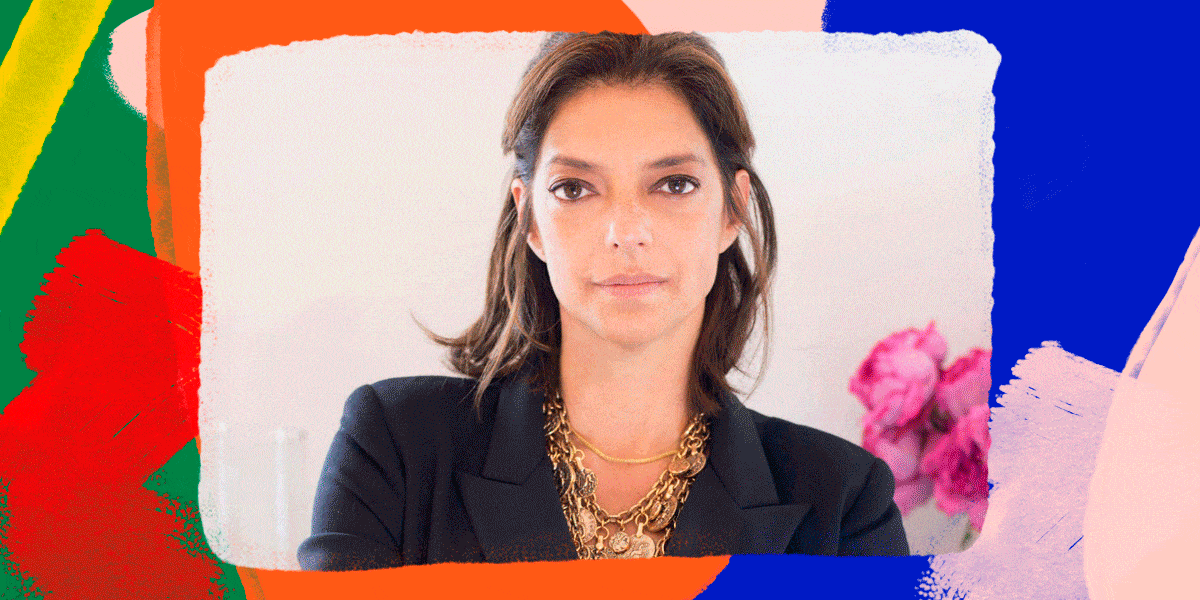
This is part of The Power of Us, a series running across Hearst Magazines that celebrates the deep and profound ways that Hispanic and Latinx culture has shaped America. To see the complete portfolio, click here.
Though it was officially established 33 years ago, this year’s National Hispanic Heritage Month may be more salient than ever. Recent census data indicates that Hispanics and Latinos had the most demographic gains of any other group measured, reaching nearly 20 percent of the U.S. population share over the last three decades. As the country’s largest minority group, the influence of the Hispanic and Latinx community impacts every aspect of U.S. culture from food to film, style to art. This Hispanic Heritage Month, which falls annually from Sept. 15 to Oct. 15, ELLE asked Hispanic and Latinx style purveyors and creators—Lulu Cordero, founder of Bomba Curls; Sara Beltrán, jewelry designer and founder of Dezso; Carolina Irving, textile designer and founder of Carolina Irving Textiles; and Marina Larroudé, founder of Larroudé—about their identity, heritage, and journeys. Here’s what they had to say.

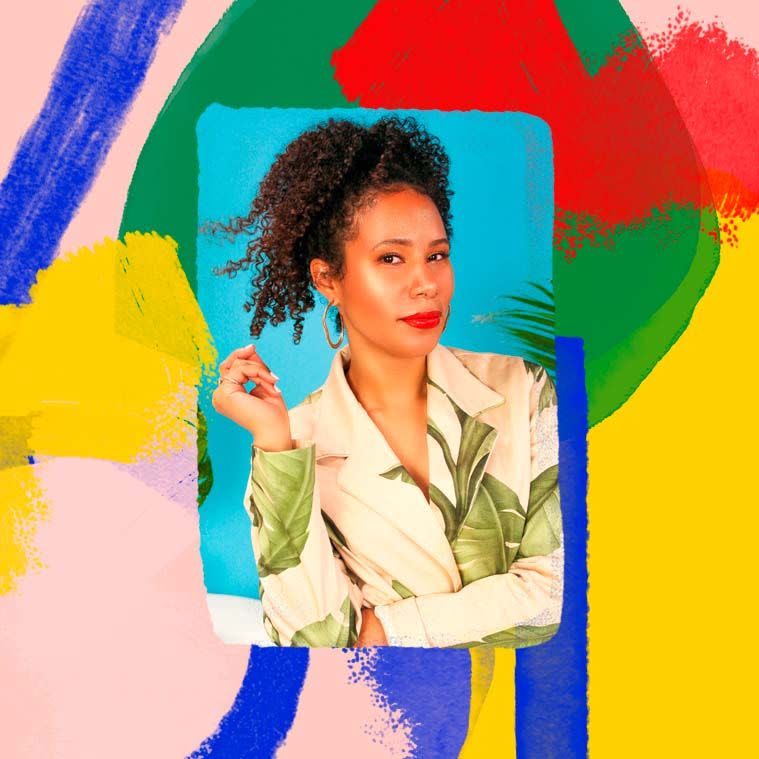
Lulu Cordero: It is with so much pride that I create the products that I do, taking elements and ingredients from Dominican culture and giving it to the world. Also to celebrate Blackness and what it means to be Latino is a beautiful thing. I am proud to introduce people into my world, this little piece of the Caribbean, and to touch the next generation who will see themselves and know they can be true to who they are and remain authentic to their roots.
Sara Beltrán: My work reflects the influence of Mexico, my country, but also India where I do a lot of design work too. I always say, I am proud to be Mexican, but I wouldn’t be who I am without India. In Mexico, I am very loyal to the artists I work with and find myself always wanting to work with them even more. I love saying things we create are made in Mexico.
Carolina Irving: In my work, there’s great attention to detail and that is culturally grounded for me. Latinos love to have people over to their homes and make their homes beautiful. I’m obsessed with food, but also the dining room and making sure the table is beautiful. You see this pride and attention to detail in even the most humble of homes across Latin America and I’m honored to share a piece of that world with others through my work.
Marina Larroudé: I have so much pride as a Brazilian creating my line as a reflection of our culture but also by using our factories. When I worked at Barneys, I used to produce our shoes in Italy. At the time I did not know Brazil could execute high end shoes despite their capacity for production. For my line, I wanted the work to come from my home country, and when I got my first samples from Brazil, I started crying because they were perfect. If I had known, if there had been a way for people like me to see the level of work possible in Brazil, I would have started working with those factories years ago.
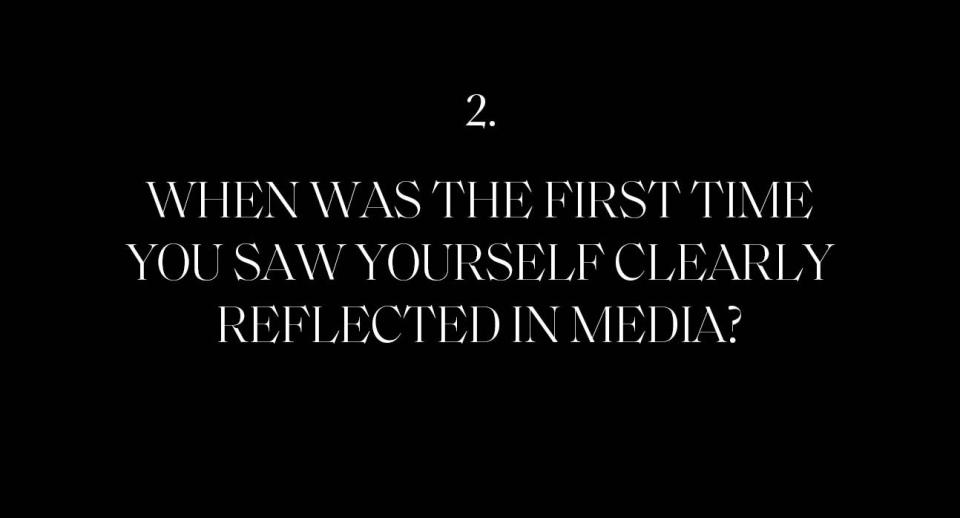
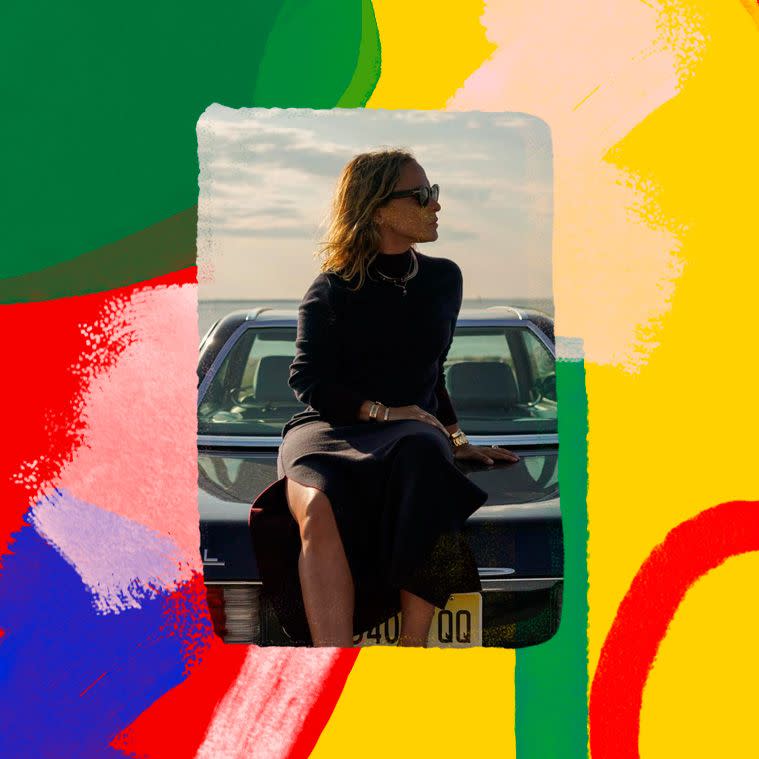
LC: Unfortunately, in Latino media in the U.S. with the exception of icons Celia Cruz and Johnny Ventura, there was no one who looked like me. I never saw myself in U.S. Latin media outlets. But when I tuned into media in English, that’s when I saw Oprah, Diahann Carroll, Naomi Campbell, Black women who looked like the women from my community. For the first time in my life, I saw women on TV that were glamorous, educated, successful, and looked like my mom and I.
SB: I’m not sure I did ever see myself reflected in American media when I was growing up in El Paso, but do remember something that caught my attention for the first time. Jennifer Lopez was on the cover a news magazine in the early 2000s and the coverlids were also in Spanish, and I remember thinking, This is a big moment.
CI: I can’t say in the world of interior design that I saw myself represented or reflected by anyone, but I have seen it in the movies. Édgar Ramírez, a fabulous Venezuelan actor, is a prime example of seeing someone reflecting my country in a positive way.
ML: I’m not sure I did. I think I was very naive and never felt like an outsider even though I was, and I knew, for example, that business in the United States at the highest levels takes place mostly among white men. But when I arrived in NYC, the Brazilian models were having a big moment and I was living in the city with all its diversity of people. So I saw myself everywhere in a way because everyone seemed to be from somewhere else, like me.
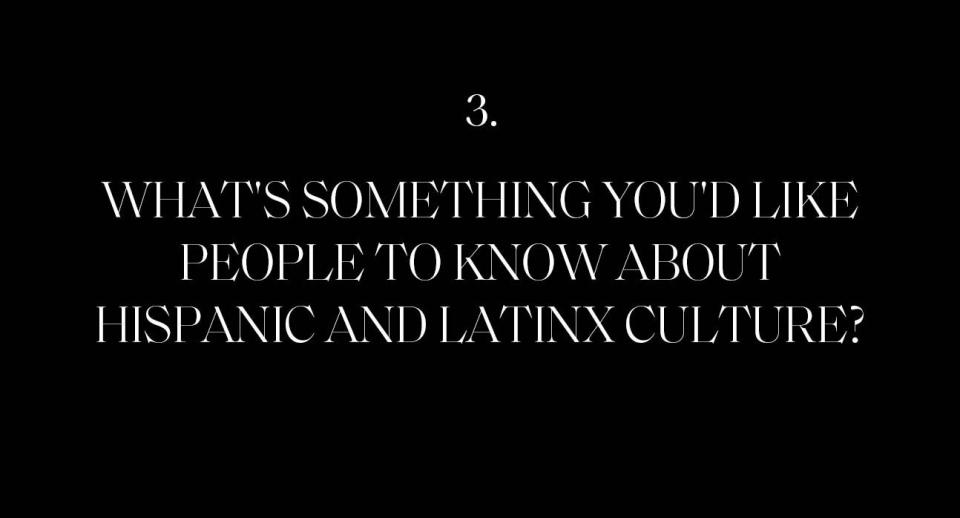
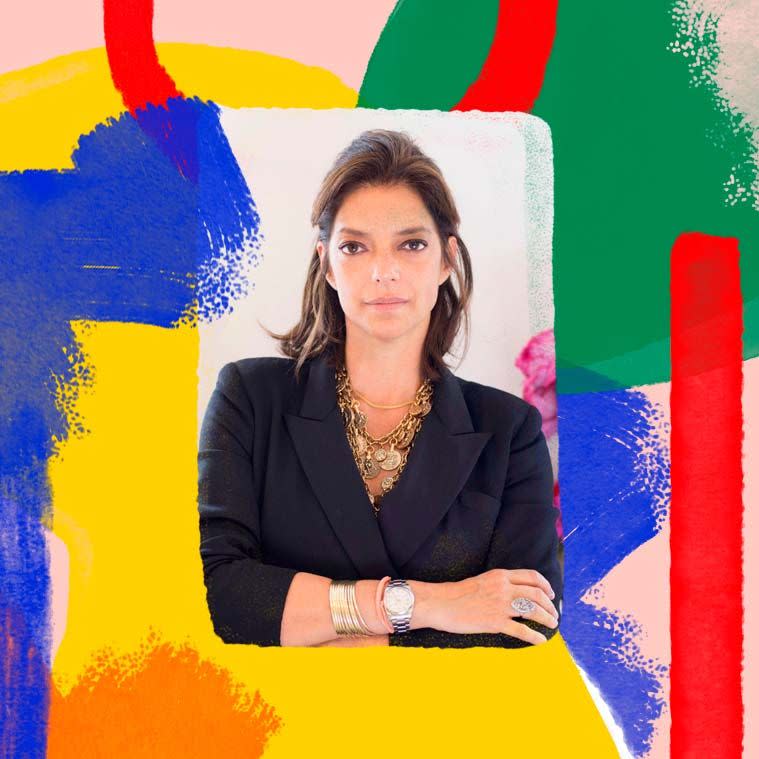
LC: I want people to know we are not a monolith, that we come from multidimensional cultures. We are more than feathers and shimmy-shake-shake.
SB: That we come from a heritage that is very culture rich. Not only Mexico, but all of Latin America is culture rich with so much history and diversity across the cities and communities. We are also very dreamers and very driven. We don’t enough credit for that. Sometimes people try to put us down, or put us in a box, but I don’t understand that. I was born in El Paso, Texas, from Mexican parents and grew up accessing both countries and cultures. I grew up believing that the more cultures and languages that you experience and live, the better.
CI: We have a great sense of humor. We’ll find humor in nearly anything. There is also our gift of intimacy, which happens very quickly. Walk into a Latin shop and whomever is helping you becomes, almost immediately, a friend.
ML: I’m glad as a society that things have shifted so that when I meet people then don’t assume that I samba and love to party or that I am from the Amazon—the only things they would know about Brazil. People’s sense of Brazil’s cultural offerings has expanded over the years. But what I’d like people to know about our culture too is that we are very professional and can excel at the highest levels. We can be very serious in our pursuits and that drives our success.
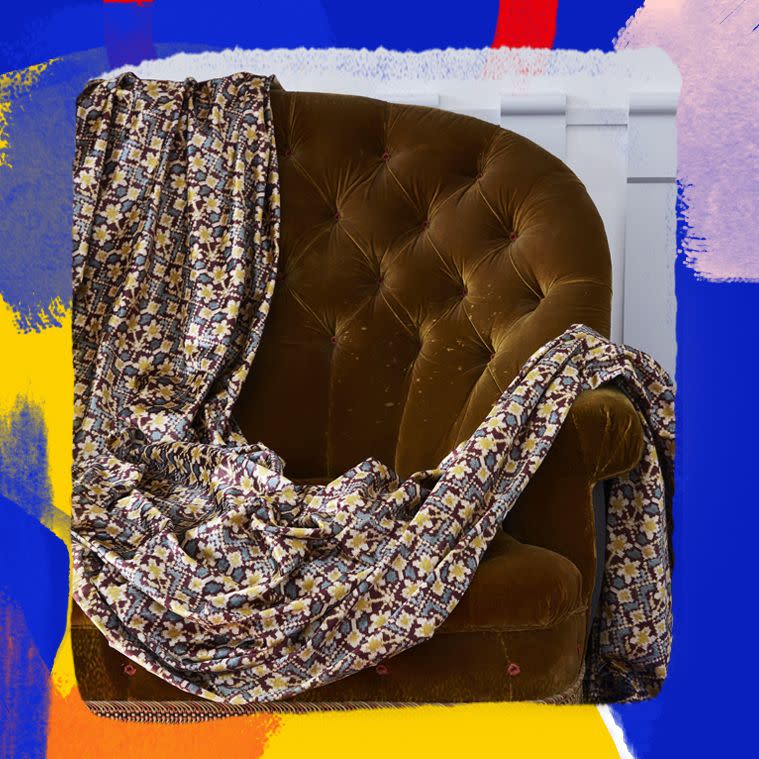
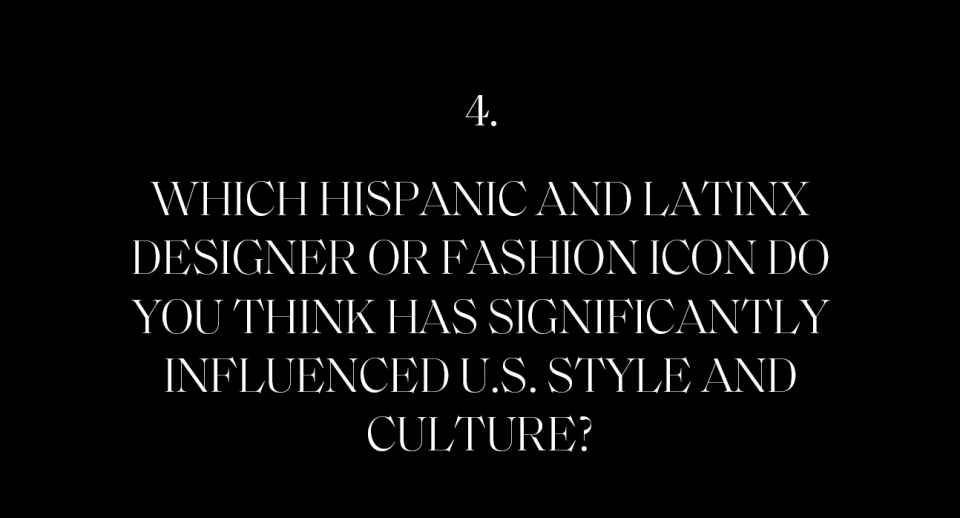
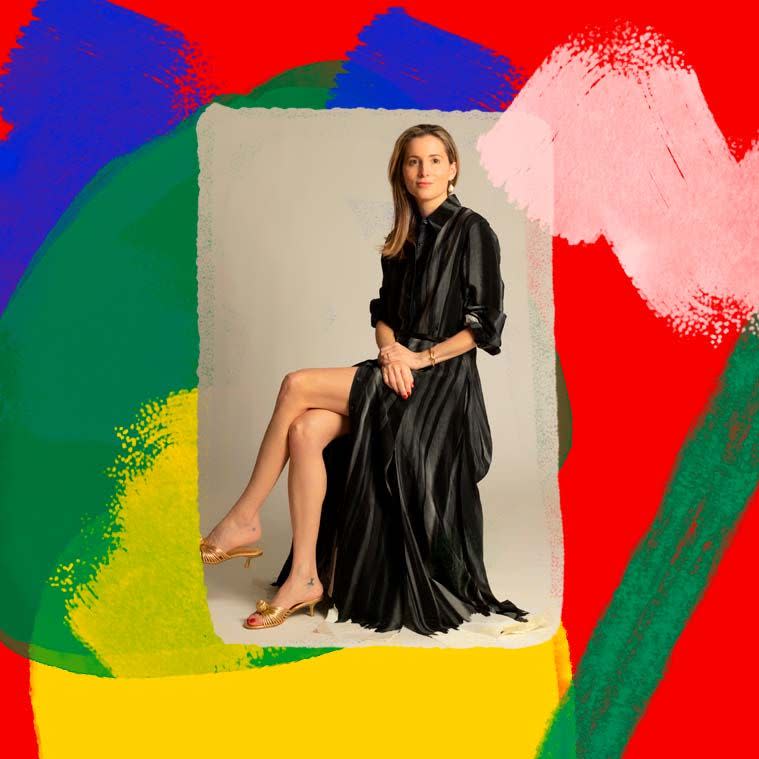
LC: My fellow Dominican Oscar de la Renta, who had the most elegant and refined taste. I loved how he would take certain Caribbean elements, from seashells to pearls to specific floral prints and incorporate them throughout his art. Also he brought notability to the island and did so much for communities there as far as social work. I have a vivid memory of my mother wearing an Oscar yellow and white floral print blouse that was so pretty. It left an impression on me.
SB: Someone whom I believe helped drive a more diverse beauty aesthetic in the United States is Ileana Dominguez, who hails from the Tarahumara indigenous people of Mexico. She modeled for YSL and other major houses decades ago. Her distinct features represented a different look from what was common in the US at the time and I believe propelled an awakening and a more inclusive aesthetic.
CI: Carolina Herrera, my fellow Venezuelan, projects a very specific Latin elegance in everything she does. She embodies it in the way she holds her head, very dignified and with incredible poise. Also Rita Moreno, who is not a designer, but she’s had a huge influence culturally. From West Side Story as Anita to present day, you see the elegance in the way she moves her body, her hands, her legs even when she’s not dancing.
ML: Oscar de la Renta brought so much glamour to American fashion, and that in and of itself was very unique. His designs are inspirational and royal with an eye toward women looking pulled together, which I believe has a lot to do with his Latin heritage. So much of American fashion is sportswear and casual wear, and Oscar brought elegance.
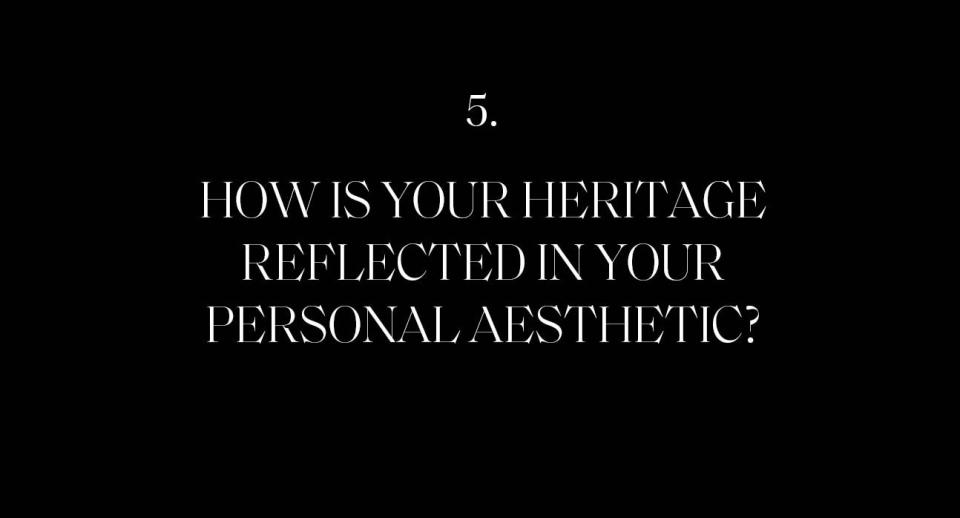
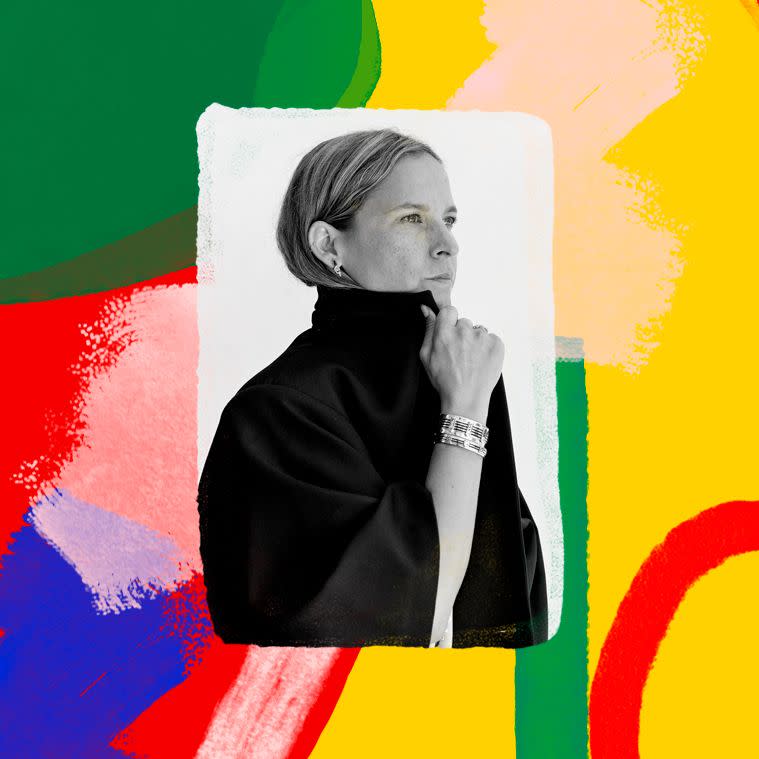
LC: I’m intentional about supporting and buying Latinx and Black designers. Johanna Ortiz is a favorite because she loves to incorporate color, pattern, and fun elements that remind me of my Caribbean roots. Other labels and designers I collect include Romeo Hunte, Pyer Moss, and Fe Noel.
SB: If there is a consistent aspect to my style that nods directly to my Mexican heritage, it’s the woven bracelets I wear made by artisans in Chiapas. The bracelets, which I also carry in my line, reflect the beauty and generational artwork of this community, a practice these women employed when weaving the codes of their ancestors. These bracelets will stay a part of my look and my collections always.
CI: Even though I wear a lot of dark colors and navy blue, I’m drawn to color, especially in the way I live. I could never live in an all beige house. It might be beautiful, but after half an hour, I’m going to have to add some color. I believe it’s very Latin to use colors as a way to enhance the beauty of things. My mother would always say to me, ‘You are always wearing black and brown, please wear some canary yellow and pink!’ It may have to do with the fact that our worlds are color-filled, from the birds to the flowers, from Mexico to Argentina.
ML: I’ve always worn a lot of color and a lot of prints. My husband says I’m like a vibrant bird. Very early on in my career, when I was still a fashion assistant, I would sit in fashion shows and all the editors would be wearing black minimalist looks, and there I was in color and prints. I realized then that my voice, what made me me, was special and a proud embrace of my heritage. It’s that way with my accent, too. People used to make fun of it, but the minute I accepted it as an asset things changed for me. My essence is my asset and now my brand is known for the prints we feature on our shoes.
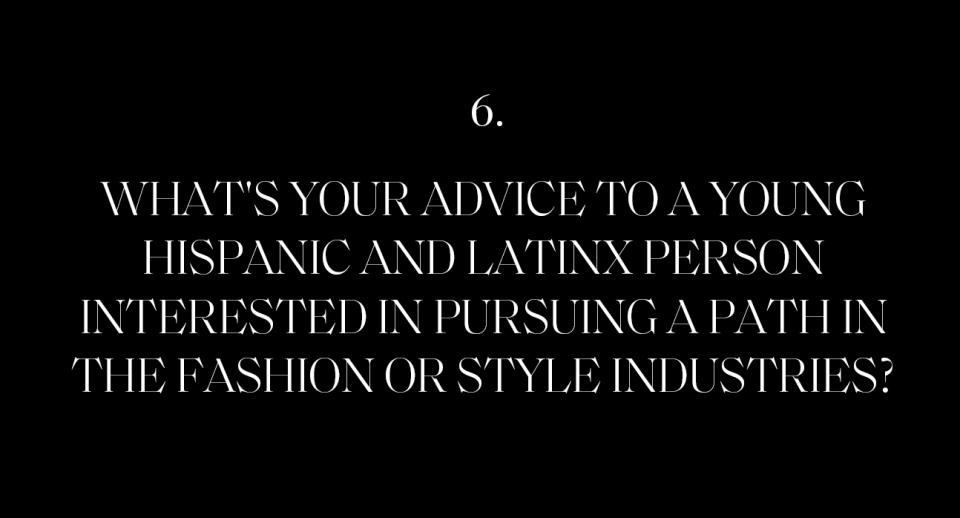
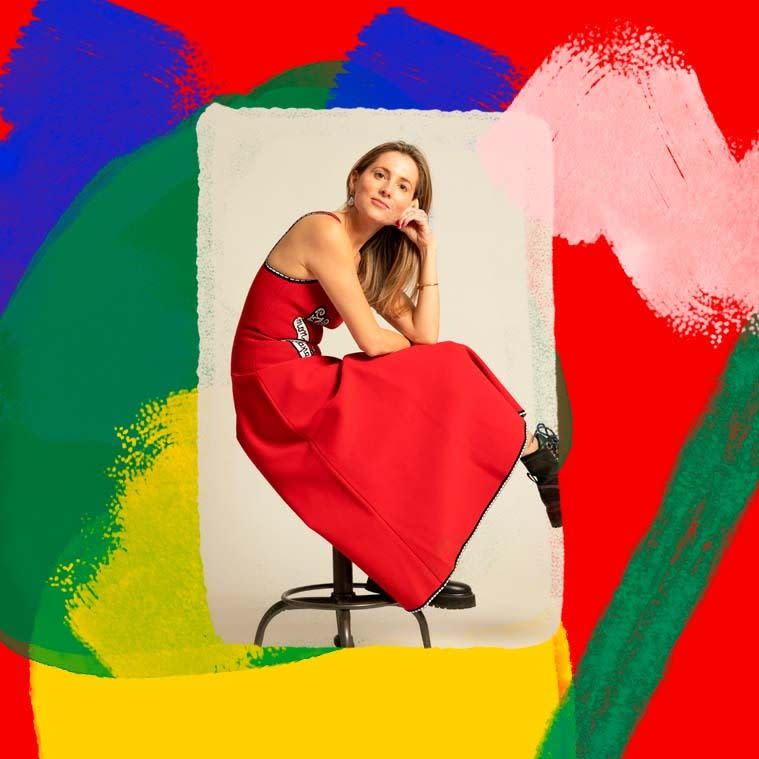
LC: Develop a thick skin and stay tapped into the why of what you started and created because truly it is tough to come up as a creator. You must have the passion, the hunger, and the drive to keep pushing through the nos you will hear. Especially as an Afro Latino, you will encounter people—from the boardroom on down—who won’t understand your vision. But keep persevering and when a door shuts. Find the window.
SB: Make sure your DNA is reflected in your work. It’s the only way that you will stand out when buyers or editors are looking at so many designs. Stay focused on your voice and sense of art and creation and they will come looking for you. When things have a soul, you will always be successful. Also, and I say this to anyone in any field, know your goal, then be disciplined, persistent, and patient in the pursuit of that goal. Success does take time.
CI: I never sold a yard of fabric when I did work that was not me—when it was what other people were doing—because I thought I had to be mainstream to be successful. What I learned is that success comes when you stick to your instincts and aesthetic, no matter what.
ML: What I learned personally is that you have to be prepared to work twice as hard as everyone else to prove yourself even more. Despite the fact that I had worked for Vogue Brazil, producing and styling the covers, I had to start over when I moved to New York. At the same time, you should never change who you are. Never let the market dictate your creativity or voice.

LC: When I got my first set of Bomba Curls off the production line, my mom, who had been relaxing her hair for years, stopped. With my products, she decided to embrace her natural hair. She comes from a different generation when beauty only looked one way and you needed, for example, to use relaxer in order to get a job or to be accepted by society. So for her to embrace her natural hair was a was big deal. She chopped off all the relaxed hair and rocked a little Afro and grew out her natural curls. Now she says she’s a Chica Bomba!
SB: One of the proudest moments was a very personal one. I was walking around New York with my father after I launched my jewelry line, Dezso. He was visiting from El Paso, and he said to me, ‘Who would have ever imagined that one day my daughter would be living here and doing what she does and so well.’ It was hard for him when I moved away from El Paso. He didn’t understand that I wanted to experience things. Like many Mexican fathers, he wanted me to stay close to home so he could protect me always. Seeing my dad express his pride for me in that moment on a New York sidewalk, for him to understand why I left home, made me so very happy.
CI: Working to help style the White House for the Obamas and knowing my fabrics were selected by them for their rooms was a huge honor and privilege that I’m still grateful for today. To spend time in the White House is to realize what it represents in terms of power and importance. It’s funny because it’s actually not that daunting in size, but it is a fortress in terms of security and what it symbolizes. It reminded me that the United States is an incredible country where you can make it with opportunity and if you want it badly enough. That’s simply not true in many other countries.
ML: There have been so many moments from the first time I worked with Gisele Bündchen for the cover of Vogue Brazil to getting my first job at Style.com when I was an assistant in New York, and then becoming the fashion director there and then at Barneys. Of course, when I launched my brand, as an American brand where we are based, it was a very pinch-me moment.
If you would like to further support the Hispanic and Latinx communities, donate to El Museo del Barrio, a New York City museum that showcases works by a range of Latin American artists, here: DONATE
You Might Also Like

